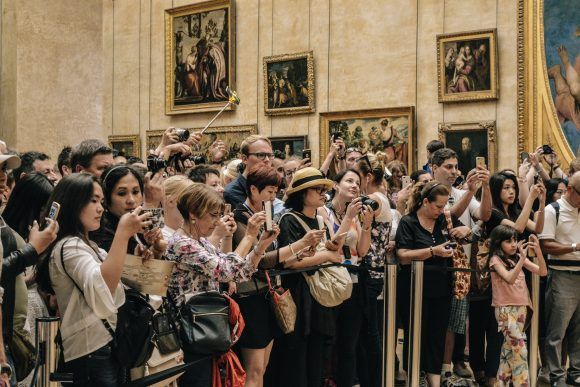
Which Time Periods in Art History Have the Best Financial Performance?
Investing in art is a highly nuanced undertaking, and the market for certain types of art or specific artists can vary greatly. As a rule of thumb, art is grouped into periods or artistic movements, often with a consideration for tradition or geography, such as Asian Contemporary Art, Post-war, Contemporary, Impressionist, Modern and more. So how should someone think about returns based on segments of the market?
Stock market research often groups companies based on sector.
Equities analysts often report performance by sector: tech, healthcare, financials, retail, energy. They do this in order to paint a more accurate picture of the stock market, because market ups or downs can often be driven by a specific type of stocks. Most recently we saw this in the bull (then bear) market for technology stocks.
And while you can’t predict the returns for an individual company’s stock based solely on such information, it provides a basis for understanding the underlying forces that drive prices.
The same kind of thinking can be applied to art.
Simply put, the global art market has “collecting categories” which can be thought of as sectors. The categories are broadly defined to encapsulate a particular artistic period and one or more related styles within that time frame. Though due to the subjective nature of art itself, the definitions may change depending on the auction house or reporting entity.
It is generally accepted that the four largest collecting categories are:
- Post-war and Contemporary: works created after 1945 through the present
- Impressionist and Modern Art: works created in the late 19th century through 1945
- Old Masters and 19th Century: European works of art principally created after the 12th century and before the third quarter of the 19th century
- Traditional Chinese Works: created anywhere from the mid 1950s back to the first millennium
Performance by period.
When we take a closer look at the data, it becomes apparent that the risk-reward profiles are not uniform across collecting categories. Below is a summary of the performance of the four aforementioned collecting categories as compared to the total returns of the S&P 500 in the same time period.

All of the categories mentioned exhibited less volatility than the leading stock market index, and two of the four beat the total returns. Moreover, Post-war and Contemporary and Traditional Chinese art prices, segments with the highest average appreciation, were negatively correlated with the S&P 500 index.
With its low volatility, Impressionist and Modern art proved to have the most stable price appreciation, likely due to the number of high quality works still held in private hands and relative frequency of transactions, which allow buyers to ‘mark to market’ their holdings and have a higher degree of certainty around pricing. The Old Masters category, meanwhile, seems to have stagnated over the last twenty years, in large part due to changing tastes and the absorption of most surviving masterpieces into museum collections.
So where do you invest?
Aesthetics aside, an investment minded buyer should focus on the segment that provides the risk-adjusted return best suited to their financial goals. In order to help illustrate how one might think about factoring that into their decision making process, we have calculated the Sharpe Ratio for each of the four collecting categories using the 10-Year Treasury Note as the risk-free rate for the basis of the comparison.
The calculation allows us to think about how each collecting category might be ranked based on its risk-reward profile. In order of highest to lowest Sharpe Ratio, the collecting categories ranked as follows: Post-war and Contemporary (.49), Traditional Chinese (.25), Impressionist and Modern (.07), and lastly, Old Masters (-.24). With a negative value, the Old Masters category can be thought of as an investment that is not worth making for any number of reasons, and most clearly, because the risk-free rate exceeds the likely return.
While the Post-war and Contemporary category exhibits the highest rates of return, it is also much riskier than Impressionist and Modern art: the return is just over 2 times higher, while the risk is approximately 50% higher. Therefore, unless you are very conservative or are able to buy an Impressionist and Modern work at a significant discount from the fair-market value, Post-war and Contemporary provides the best risk-adjusted returns.
Both the name of the artist and the aesthetics of the work matter.
Sure, Vincent Van Gogh was not understood in his own time and his paintings later sold for record prices. However, one might say that he is the exception, not the rule. Most artists who consistently lead the aforementioned collecting categories were fully ingrained in an artistic movement and gained prominence in their own lifetime.
That being said, picking an artist who has staying power is only half the battle. While the name carries great weight in the art market, the properties of the work itself are incredibly significant. In order for the work to continue to appeal to as many collectors as possible, it must be in the mature or signature style of the artist. While the an iconic work by Jackson Pollock in his signature ‘drip’ style can earn tens of millions of dollars at auction these days, for example, his surrealist paintings, even from the same time period, sell for a fraction of that price.
Note: Other categories include: American Art, Latin American Art, Asian Contemporary, etc. however for simplicity we are focusing on the four largest departments.
* Deloitte & ArtTactic Art Market 2016 Report, p. 106
** As measured by the standard deviation
*** The Sharpe Ratio presented is an annualized 20-year return less the return on a 10-year T-note divided by the 1-year standard deviation of annual returns.